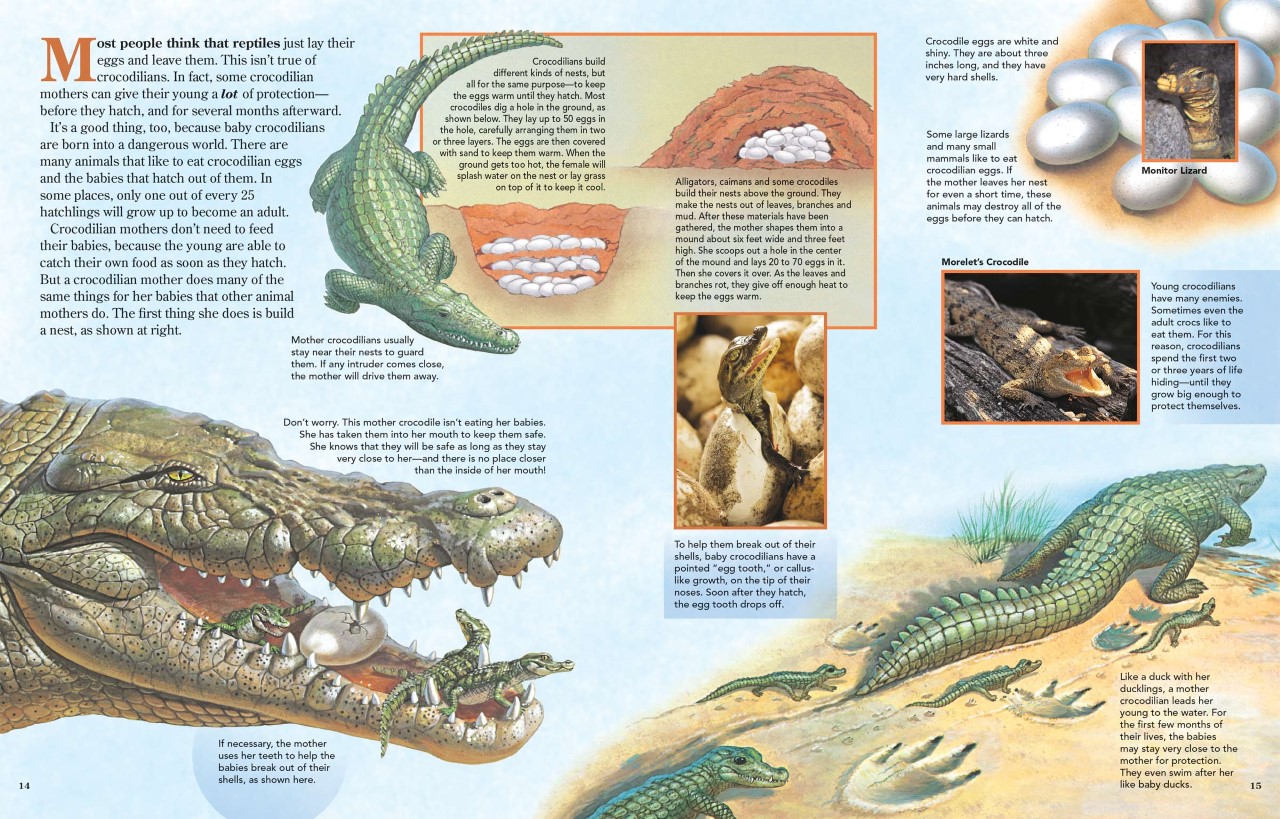
Some Crocodilians Are Good Mothers
ByMost people think that reptiles just lay their eggs and leave them. This isn’t true of crocodilians. In fact, some crocodilian mothers can give their young a lot of protection—before they hatch, and for several months afterward.
It’s a good thing, too, because baby crocodilians are born into a dangerous world. There are many animals that like to eat crocodilian eggs and the babies that hatch out of them. In some places, only one out of every 25 hatchlings will grow up to become an adult.
Crocodilian mothers don’t need to feed their babies, because the young are able to catch their own food as soon as they hatch. But a crocodilian mother does many of the same things for her babies that other animal mothers do. The first thing she does is build a nest, as shown at right.
Crocodilians build different kinds of nests, but all for the same purpose—to keep the eggs warm until they hatch. Most crocodiles dig a hole in the ground, as shown below. They lay up to 50 eggs in the hole, carefully arranging them in two or three layers. The eggs are then covered with sand to keep them warm. When the ground gets too hot, the female will splash water on the nest or lay grass on top of it to keep it cool.
Alligators, caimans and some crocodiles build their nests above the ground. They make the nests out of leaves, branches and mud. After these materials have been gathered, the mother shapes them into a mound about six feet wide and three feet high. She scoops out a hole in the center of the mound and lays 20 to 70 eggs in it. Then she covers it over. As the leaves and branches rot, they give off enough heat to keep the eggs warm.
Mother crocodilians usually stay near their nests to guard them. If any intruder comes close, the mother will drive them away.
 Don’t worry. This mother crocodile isn’t eating her babies. She has taken them into her mouth to keep them safe. She knows that they will be safe as long as they stay very close to her—and there is no place closer than the inside of her mouth!
Don’t worry. This mother crocodile isn’t eating her babies. She has taken them into her mouth to keep them safe. She knows that they will be safe as long as they stay very close to her—and there is no place closer than the inside of her mouth!
If necessary, the mother uses her teeth to help the babies break out of their shells, as shown below.
Crocodile eggs are white and shiny. They are about three inches long, and they have very hard shells.
Some large lizards and many small mammals like to eat crocodilian eggs. If the mother leaves her nest for even a short time, these animals may destroy all of the eggs before they can hatch.
Young crocodilians have many enemies. Sometimes even the adult crocs like to eat them. For this reason, crocodilians spend the first two or three years of life hiding—until they grow big enough to protect themselves.
To help them break out of their shells, baby crocodilians have a pointed “egg tooth,” or callus-like growth, on the tip of their noses. Soon after they hatch, the egg tooth drops off.
Like a duck with her ducklings, a mother crocodilian leads her young to the water. For the first few months of their lives, the babies may stay very close to the mother for protection. They even swim after her like baby ducks.

